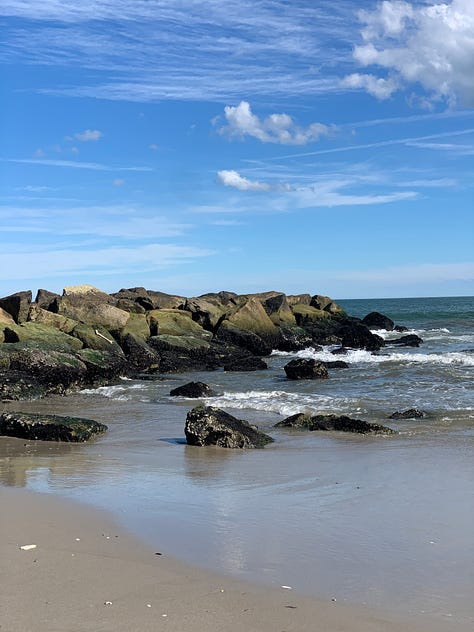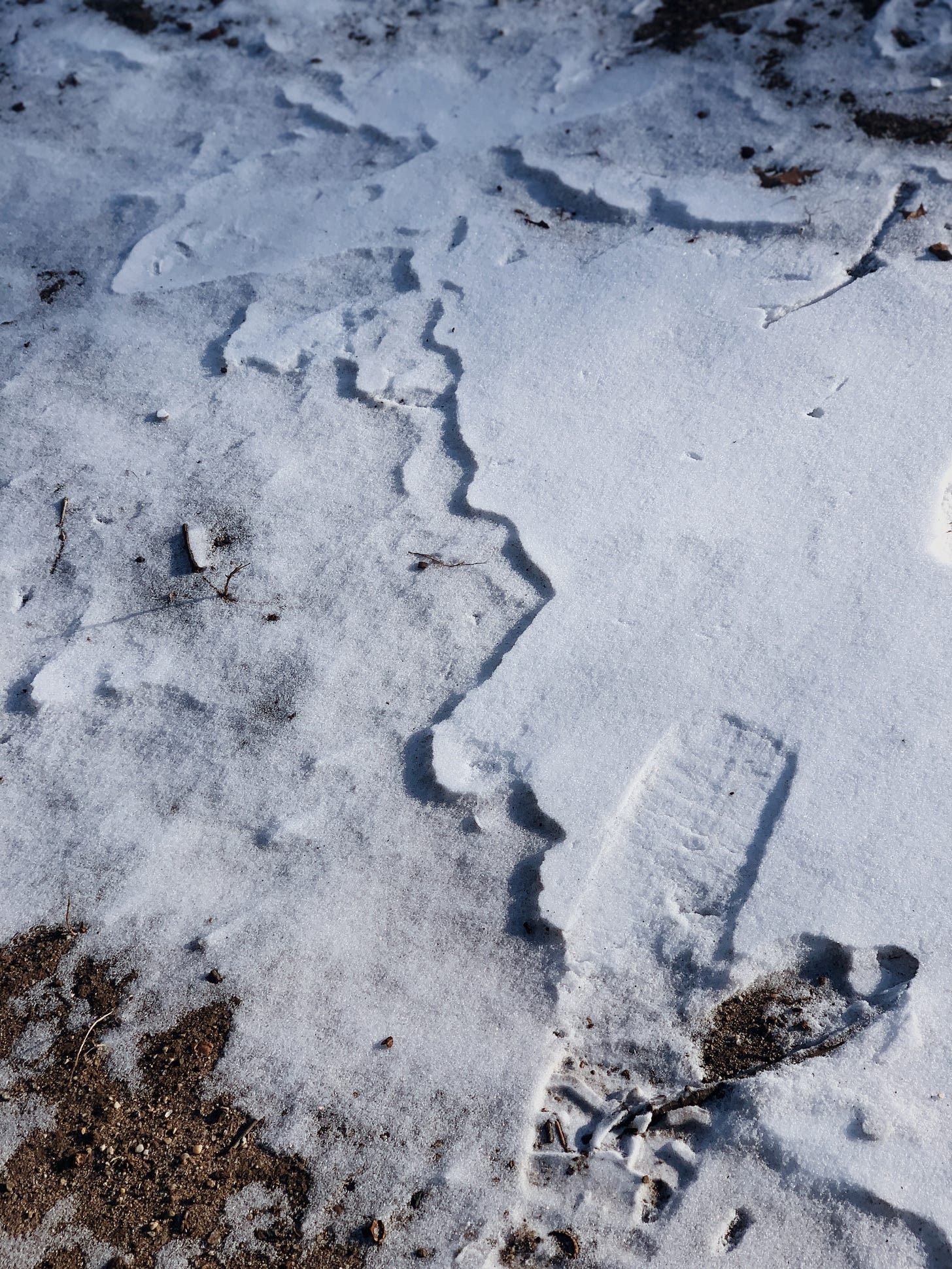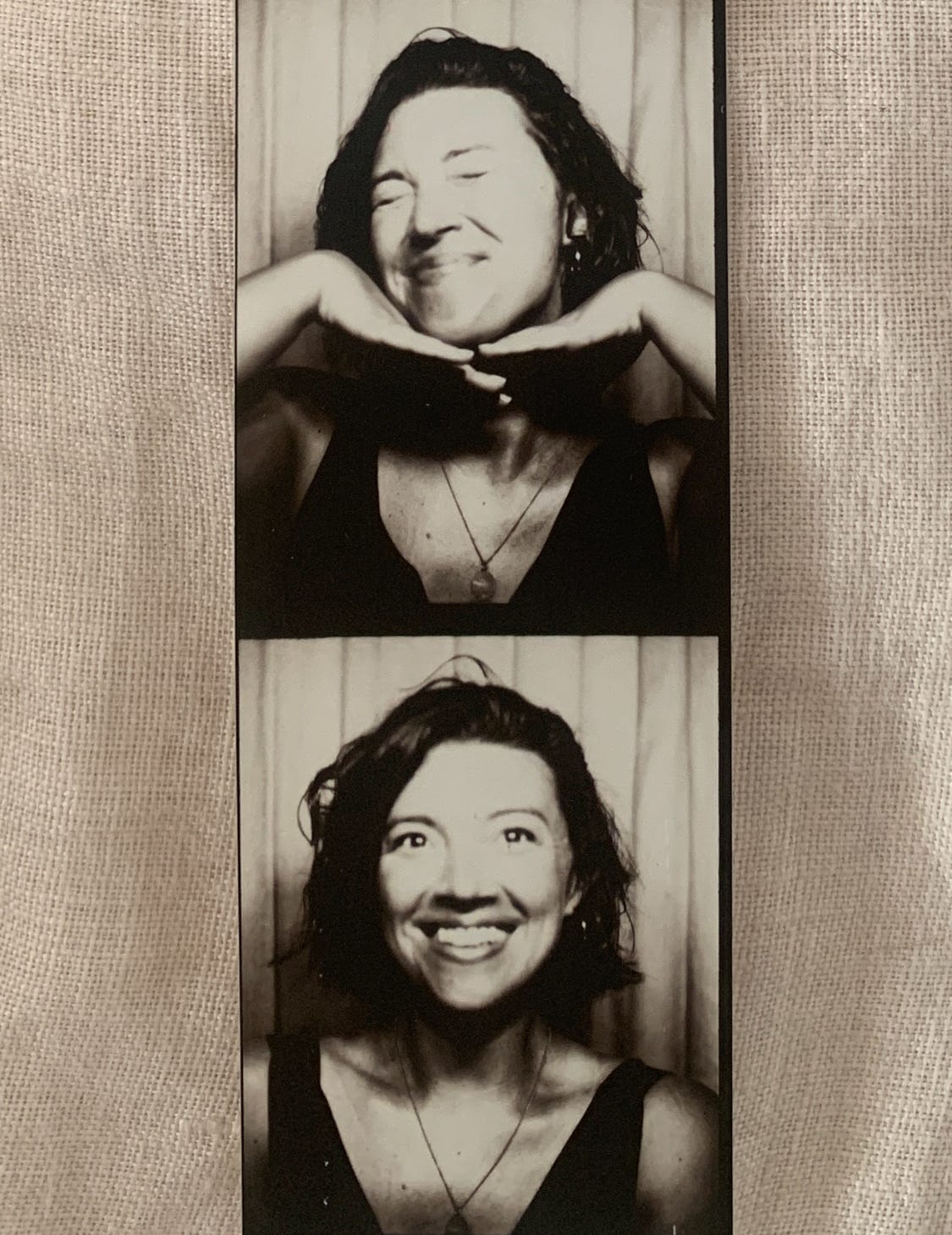A Point Between
Or a Line Between You and Your Practice
This week, slow down and ground into your creative practice. Workshops resume in Brooklyn, and if you’ve been seeking some creativity or solace or texture or paper, sign up. The calendar is lighter this month, as I squeezed and sprinted my way through the holiday season, through the portal that is December; ever onward, I’m bringing a lighter, grounded step for these first weeks of the start of the season. I hope you’ll join in. Should you find a need or desire to start a creative, contemplative practice, and if you find resonance in focused conversation, my 1:1 sessions may be a good fit. As always, pair these practices with a journal from Odette Press.
In the early morning, an image in a text of snow shows a yard and a field of white. Friends flurry pictures. Winter arriving. No rupture to the field yet, no sign of lines, no yield, the space I see is white and wide and flat, void of footprints. A yard, a hillside, a blank space, a field of unobstructed snowfall. Quiet visits in the slow and cold of winter, until somewhere something disrupts this blankness: a line is drawn, in laughter, in sled, in steps taken. A line of living, traced in movement and gravity across the snow in undisturbed vastness. A blue shadow of sunlight stretches out across the distance. A line.
I sit down at dawn in front of a blank, white space: a piece of paper. In the thin dark hours I turn toward my own blank field, mind quiet, brimming. In the silence, a single point of focus between the idea, the desire to write, and the first dot of ink on the page. An idea, a beginning.
Taking the pen, I make the first spot/form/impression: line from one idea to the other. That’s what we do when we are breathing, living, and writing. A single point of ink on a page. A line is a thread between two points. A line starts as a pulse: an idea born from you, into you, or beyond you, a bead of sweat, a single point of focus or intrigue. You are being with it, and noticing it, and expressing it. A single point of ink is then made, dragged in gentle or hurried momentum across a page: a line is formed. An idea is a dot drawn out to bring some impulse to fruition. To concentrate, you breathe, and bring your mind to a single point of focus.
A flowers’ stalk, grown to bloom, is a line that reminds of rising, starting as a seed or a single point held in ground and gravity, and then tended. It grows in time. In etching, one may take a line, and drag a sharp point through dried ground to make a line, or many lines, so the image is formed. There, movement meets with a direction, the energy of idea, and desire to be created. What is the quality of resonance between two points? Between life, your ideas, and their insistence? That is to be felt and sensed in the process. Trust that when you feel it, you will sense the space between these two points and your ideas; you will feel it as a forwardness, an ongoingness. An intention is a line you draw between your inner world and your desire.


In the morning, as I brew coffee, I walk a line in my kitchen. Water boils. Days repeat but not the same. I am taking steps back and forth. Steam is a line curling and rising from the thin spout of the kettle. That day, the floors are freezing. I think of rivers I’ll run beside, the lines of water, pouring hot water across the grounds. Back and forth I walk, making lines across winter floors for the four minutes of brew time, tracing attention and steps in slow deliberation, an economy of line in the space of my kitchen.
In walking meditation, we hold ourselves upright. The practice is a bridge, drawing a line between the still point of sitting and the activity of the day. Lifting, placing, then lifting, placing, the action is one of being awake. Turning, eyes across the horizon, from kitchen to city, I stand straight, I feel at once the movement and ground of my feet. I am spinning on the axis that is this center line — the spine — holding me upright in the intricate dance between the balance of my feet. The spine is a pole, a channel, a plumb line: our constant connection to the ground of being. Coffee aroma meets cold morning, spirals up.
Later, I sense the wind, considering lines. I am walking straight across the sloped, soft earth covered in snowfall after the wind is biting. I see no ground but snow, and have been tracing myself along the lines of the waterline, down the sidewalk, sloping and gray, the cement track that snakes along the shoreline on a day when the evening air is violently cold but beautiful, biting through gloves, blue buildings, the gold air of January. A line is drawn voluntarily or involuntarily between students, thinkers, and teachers. Sometimes the teacher is tangible, and we choose them; others, the teacher is disruption, or life living through us, a lesson. A neural pathway is a synapse forming. The space between two point. You move, and as you move, you notice, and you are choosing, and you are creating lines of thinking. A single point of focus, an instant, can arise and teach us. How to change the mind? Enter into the body.
The task of the spine, Iyengar states, is to keep the mind alert. On posture, Gail Sher says that to sit for writing with a spine, we sit with a spine that’s “relaxed but straight” so as to encourage an ease in the dialogue between your body and your writing. ”As soon as you bend your back,” she writes, “you lose your power.” In a moment of challenge, mediating tension, upright against a tree, Siddhartha Gautama sits, breathing. Tracing his finger toward the ground, a line is drawn down from hand to earth. Contact. Enlightenment. Breathing.



A spine is line drawn between you and the moment. Through writing, and through breathing and sensing your body, you listen. You create kin through bloodlines and meaning, and you are learning your body’s language by being with yourself and sensing. A line is a dialogue of ideas, pulsing; the universe starts out as a single point, expanding. Now, look at this: checkout lines, paintings, cities, shorelines, phone screens, witnessing. Paint, stone, singing. From there we all unfurled, creating lineages and lineages of creating. Your spine is a line between you and the landscape. To give yourself ground, then, is to root down, embodied, into the experience of feeling.
All desires start as a pulse: a dot drawn, expanded. Drawing lines between you and your desires, shaping your actions and your days, until your aim takes shape. Intention is a line drawn, one that builds up the longer the lines of time take form: the act of repeating. Learning to stand up for yourself, for your ideas, for something, asks for a line to be drawn: from the ground, through your legs, through whatever you can stomach, into the heart of the matter, out and through whatever it is you are trying to say. A blade of grass, starting from a single point, grows into a field, and then seen from the sky, becomes invisible. From the height of a plane, a road, then, becomes a thread. You begin to see your steps cohere into shape, seen from a distance.
Maybe your synapses are forming with this. Maybe somewhere nearby you sense snowfall or sunlight or the night forming. Take a deep breath. Notice your spine, and trace a line with your mind, up and down, softly, down the center of it. Notice this: your centerline, your axis. Continue breathing, and put your attention into the act of tenderly tending to it, tracing it, and noticing. Then fill in the blank: I want to ___ / my aim is ___.
For Paid Subscribers:
For the year ahead, I’ll be focusing in on Senses, concentrating on noticing in the world, and feeling. I’ll be sharing more of these lists in a larger, monthly feature for paid subscribers, Sensing the Month, with prompts to expand your writing practice. In tandem with this dedication to feeling and sensing, in the coming year, I’ll also be exploring ways to bring past and future publications from the digital to the page into tangible experience; more on that soon. Not required by any means, but always appreciated, this season would be a good one to upgrade your subscription.
From the Studio:
Nourished by, Nourishing:
My line of thinking, lately, and often is this: flavor forward, nutritive meals, vegetable forward, balance between the quiet and the elaborate. Something that connects me (mind, body) with the season. Enter: squash. Roughly chop a butternut squash and cover with enough water to easily submerge the veg. Add a generous scoop of miso to the pot, and a clove or several of garlic. Boil for ten minutes, then blend. I’ve added this to oatmeal, consumed it as the soup it is. I shared the second to last Colorway essay on Thyme last week; included, are recipes for squash pasta and a browned butter apple thyme cake or loaf or bread. In line with learning and lineages, at the start of the new calendar year, here are the texts and teachers I’m rooting into.






